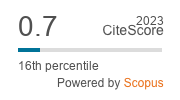Effects of Air Distributor Systems on Flow Behaviors in a Twin-Cyclonic Fluidized-Bed Combustor
doi: 10.14456/mijet.2017.6
Keywords:
Conical air-sand bed, Hydrodynamic regimes, Swirl numberAbstract
This paper presents computational and experimental studies on hydrodynamic regimes and characteristics of a conical air-sand bed in twin-cyclonic fluidized-bed combustor for three types of air entry/distributor: two propeller blades and a curve blade. Prior to cold-state tests, the computational program was used to simulate the air flow patterns inside the combustor for each type of air distributor. To attain the optimal air distributors design, the blade number was varied from 10 to 20 blades while the angles were varied from 10 to 20 degrees at specific superficial velocity of 3 m/s. From the simulation results, the three types of the swirl generators with different swirl number were selected and assembled, i.e. 11 propeller blades swirler with 14 degree, 16 propeller blades swirler with 14 degree, and 20 curve blades swirler with 20 degree for the cold-state tests. In order to obtain the major hydrodynamic characteristics (∆p-u diagrams), the experimental tests for each type of air distributor were performed by using quartz sand with the same solid density of 2650 kg/m3 at various static bed heights of 20, 30, and 40 cm and bed particle size ranges of 300–500, 500–700, and 700–1,000 μm, respectively. Four sequent hydrodynamic regimes (fixed-bed, partially fluidized-bed, fully fluidized-bed with a partial swirl motion, and swirling fluidized-bed regimes) were observed in all tests of air distributors when varying the air superficial velocity from 0 to 3 m/s. With increasing static bed height (BH) and/or bed particle size (BPS) for all types of the air distributors, the minimum velocity of partial fluidization (umpf), pressure drop at the minimum velocity of partial fluidization (∆pmpf), the minimum velocity of full fluidization (umff), pressure drop at the minimum velocity of full fluidization (∆pmff) tend to be increased. The 16 propeller blades swirler with 14 degrees seems to be the best air distributor that fit to the proposed twin-cyclonic fluidized-bed combustor in this study.








